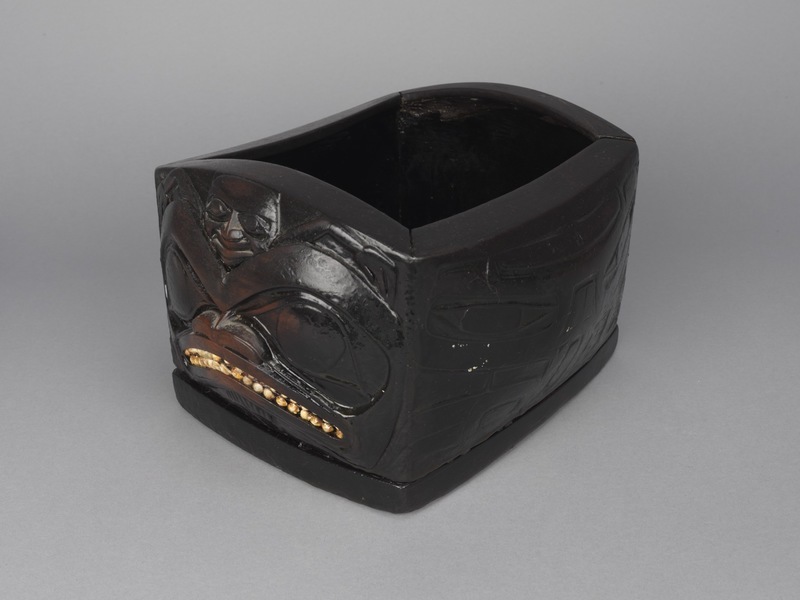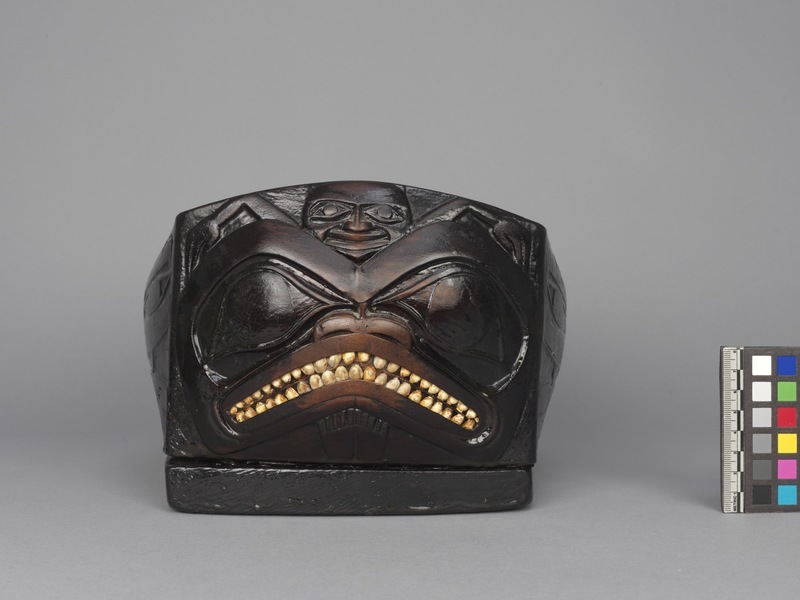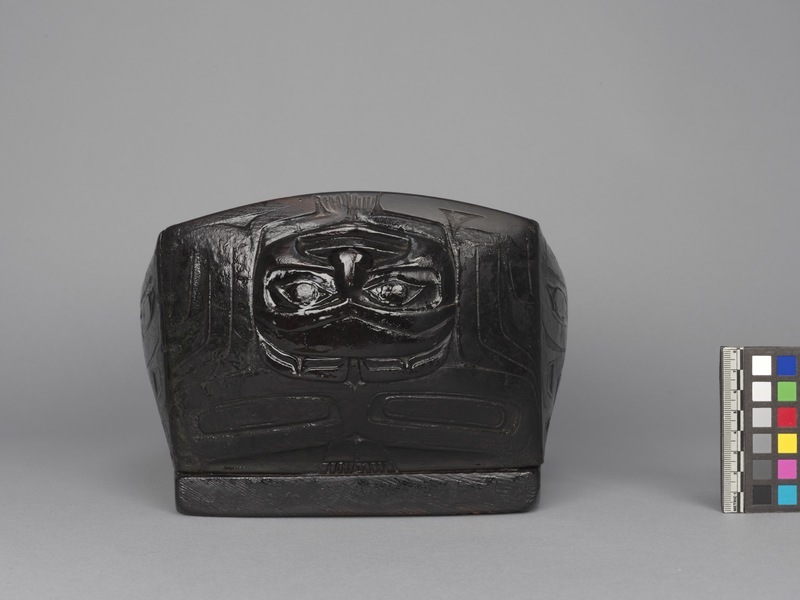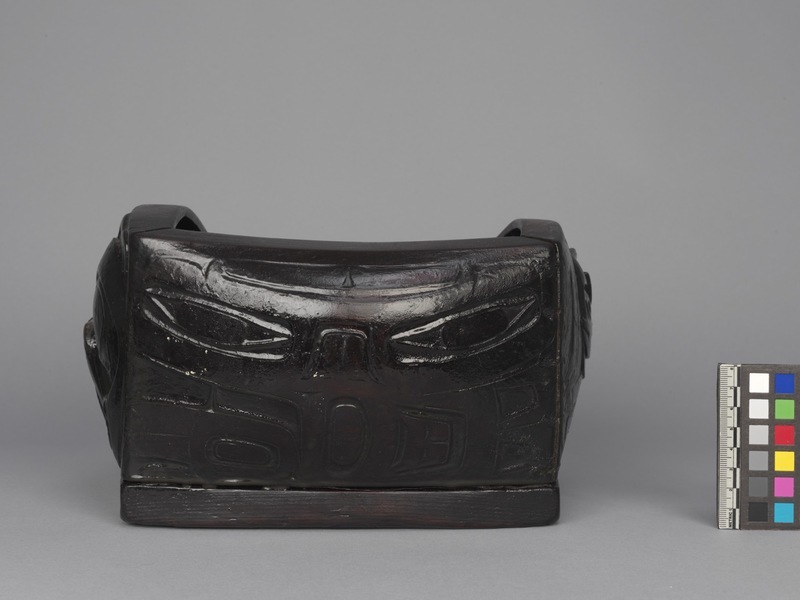Bentwood Bowl Item Number: 3260/128 from the MOA: University of British Columbia




Description
Bentwood grease bowl, with curved sides and carved ends. On the front of the bowl a human figure appears from behind a bear’s head: head and arms above the bear’s eyebrows, feet emerging from under the bear’s mouth. The claws are represented on the opposite end of the bowl alongside another human figure with its face turned upward. Operculum shells are inlaid in the bear’s mouth as teeth. The surface has been coated in grease.
History Of Use
The carved forms embellishing the outside surfaces, and the technique of manufacture, all place its date of origin to the early 1800s, although it could be older. Food oils still seep from the bowl, showing a connection to the feasts at which it would have been used, over many generations.
Specific Techniques
Three corners of the bowl are steam bent, while the fourth corner is drilled and sewn closed with strands of cedar withe or cordage; the separately carved base is also sewn into place.
Iconographic Meaning
Carved with bulging sides, this bowl speaks to the generosity of the host and the abundance of oils and foods shared with guests -- a metaphor that may be rooted in ancient containers made of hide that, indeed, would have bulged with the volume of their contents. It also conceptually merges the idea of container with a representation of a supernatural bear.
Narrative
English Methodist missionary Thomas Crosby, is said to have acquired it on Haida Gwaii around 1875. The bowl subsequently entered (and was later deaccessioned from) the collection of New York’s Museum of the American Indian (cat. no. 1/8081). It then circulated through a series of private collections in the United States, until it was purchased by Elspeth McConnell in 2017.
Item History
- Made in USA and Canada between 1820 and 1840
- Owned by Thomas Crosby
- Owned by Elspeth McConnell before August 12, 2017
- Received from Elspeth McConnell (Donor) on August 12, 2017
What
- Name
- Bentwood Bowl
- Identification Number
- 3260/128
- Type of Item
- bowl
- Material
- wood and operculum shell
- Overall
- height 17.0 cm, width 28.0 cm, depth 23.0 cm
Who
- Culture
- Haida and Tlingit
- Previous Owner
- Thomas Crosby and Elspeth McConnell
- Received from
- Elspeth McConnell (Donor)
Where
- Holding Institution
- MOA: University of British Columbia
- Made in
- USA and Canada
When
- Creation Date
- between 1820 and 1840
- Ownership Date
- before August 12, 2017
- Acquisition Date
- on August 12, 2017
Other
- Condition
- fair
- Current Location
- Case 42
- Accession Number
- 3260/0128